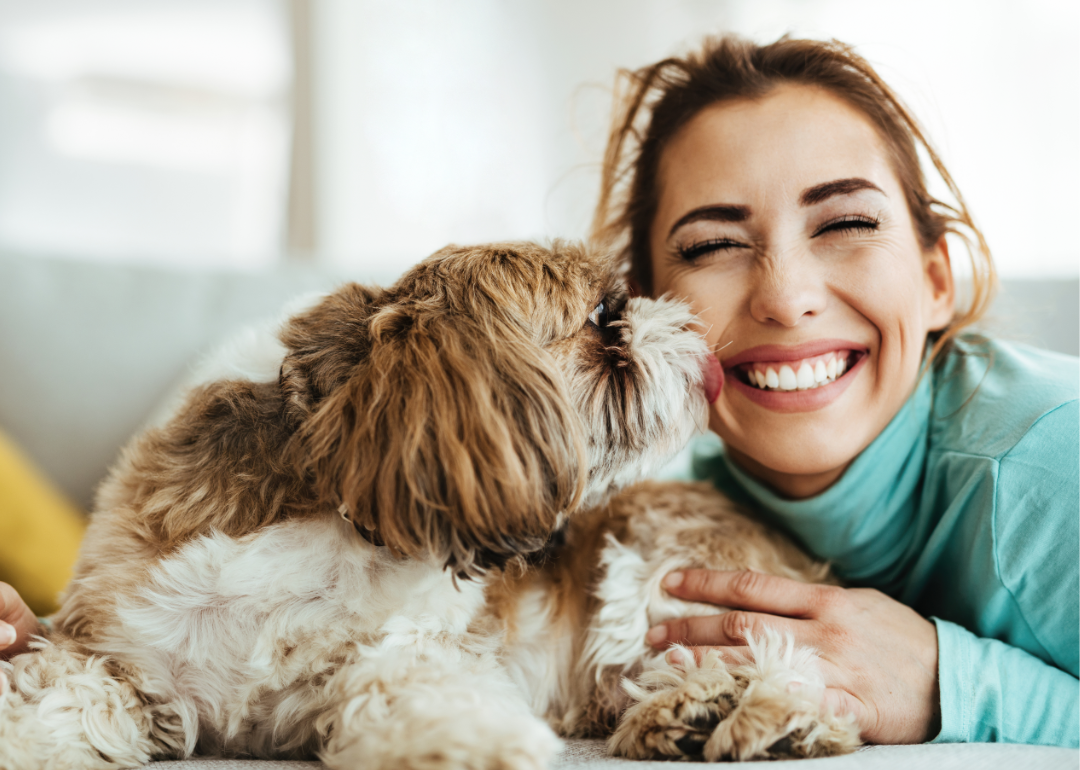
50 fascinating facts about dogs
Dogs are all around us, so it's easy to take them for granted. We think we know everything we need to know just by living with them, and for many years, scientists weren't particularly interested in studying dogs compared to more exotic creatures. So most of what we knew about them was based on tradition and conventional wisdom. But recently, there's been an explosion of scientific interest in dogs, including their behavior, intelligence, and perception, and scientists are now more informed than ever about man's best friend.
Stacker scoured scientific journals, news articles, and expert blogs to present 50 interesting facts about dogs. Stacker's slideshow includes information revealing fascinating findings to questions we would have never thought to ask. For instance, did you know that when a dog licks its lips when there's no food around, it means something about how she is feeling? And do dogs actually like baby talk?
The slideshow presents the most up-to-date answers to questions you might have always wondered about, like whether dogs can see color and how a dog's age compares to humans. It also provides details that give a richer understanding of common knowledge: You probably know dogs are excellent smellers, but just how excellent is probably more impressive than you might have imagined. This slideshow also contains some surprising facts about history. For instance, did you know that the current concept of "purebred" only goes back to the late 19th century?
Click through Stacker's slideshow to better understand how dogs feel, think, and perceive the world.
You may also like: Origins of the 50 most popular dog breeds
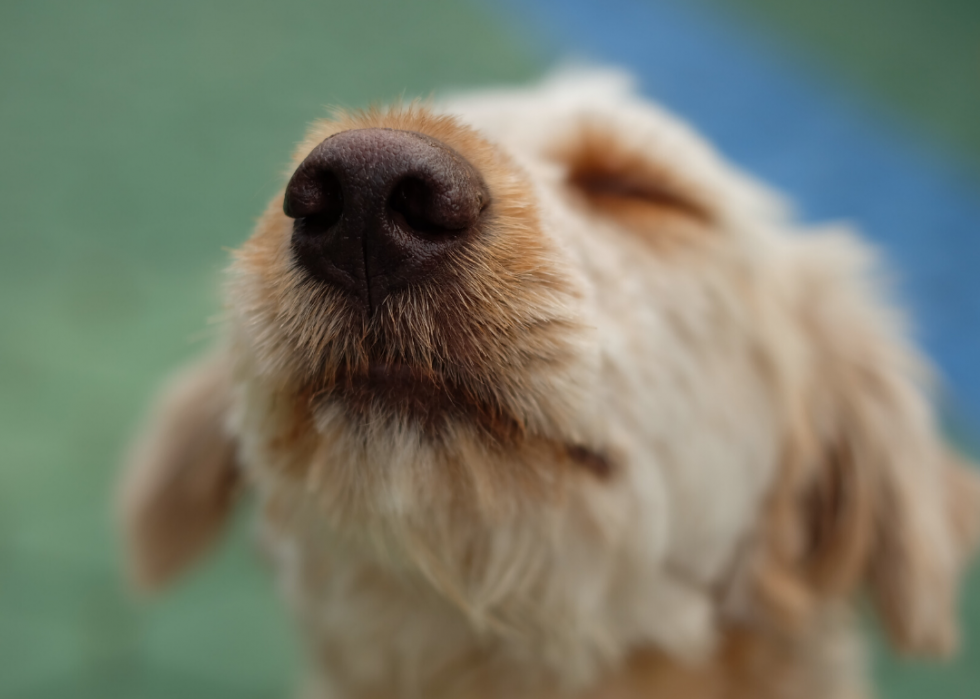
Dogs are built to smell
A dog's sense of smell is more sensitive than that of humans. A dog's nose contains around 800 different types of olfactory receptor cells, which is about twice as many as in humans. The olfactory bulb, the part of the brain that processes smells, makes up 1.95% of the volume of a dog brain but only 0.03% of a human brain.

Dogs can detect incredibly faint smells
With that sensitive equipment in their snouts and brains, dogs can detect odors even when they are unbelievably weak. Experiments have shown that dogs can detect a test chemical at a ratio of one part per trillion. In one experiment, dogs could identify the smell of ovarian cancer in a single drop of blood.
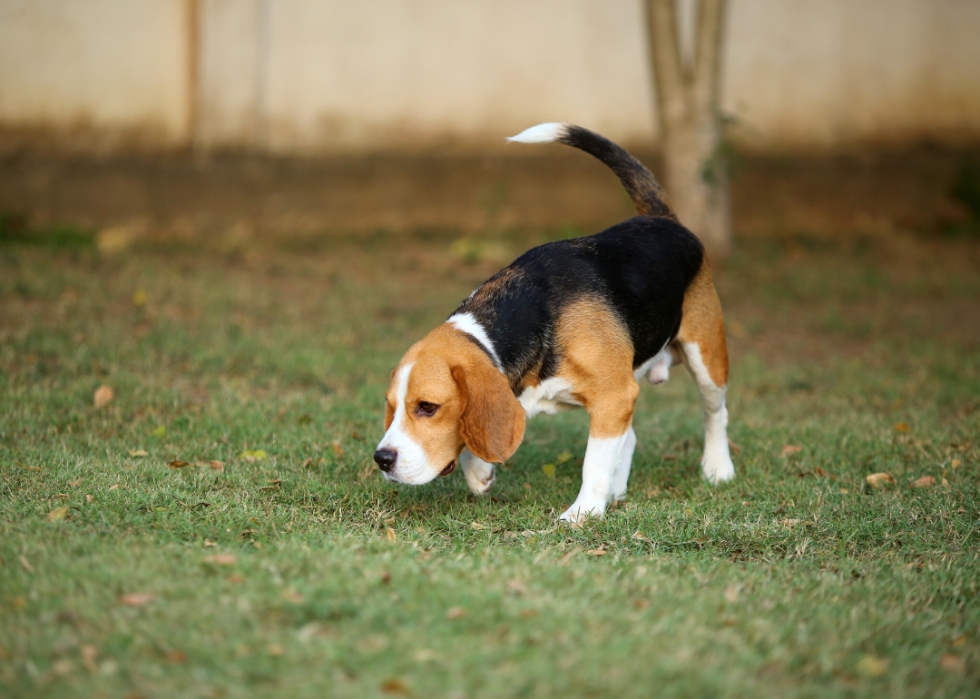
Dogs can detect slight differences in the same smell
Dogs know what direction a smell is coming from because they can tell that it's very slightly stronger say in the left nostril than in their right. Smells also change with age, and dogs can detect that: A tracking dog can tell which way someone went by the difference between the age of the smell of more recent footsteps.
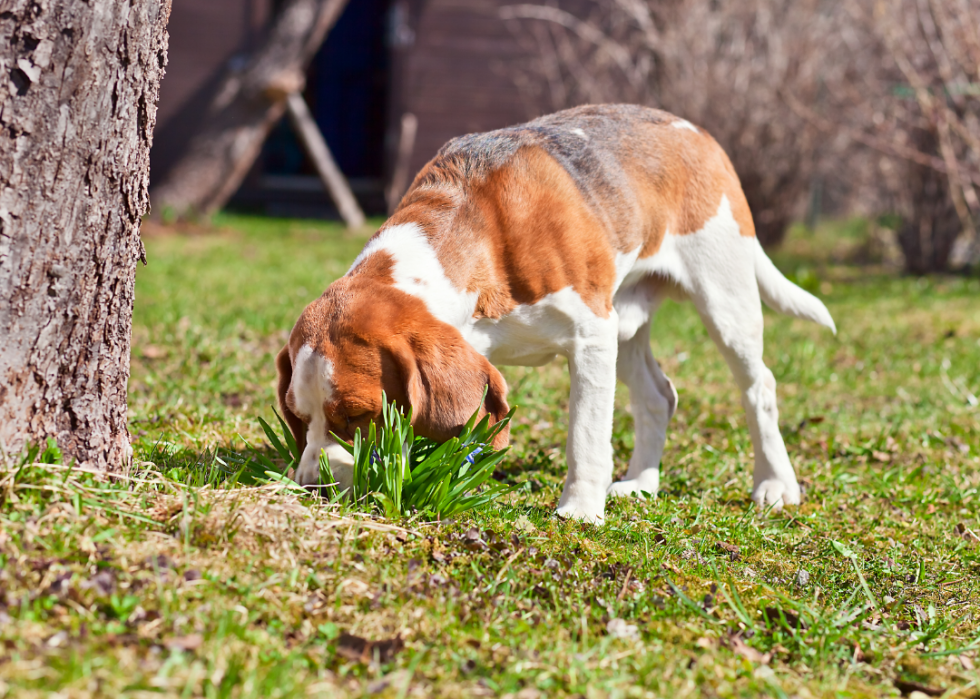
Dogs have another chemical sense in addition to smell
Like many animals, dogs have the vomeronasal organ (VNO) in the roof of the mouth, which detects pheromones. This is one reason dogs may lick things we think are gross, including the urine of other dogs—to get it closer to that organ. Along with their sense of smell, this lets dogs know many things about other dogs by what they've left behind, such as their sex and how long ago they were there.
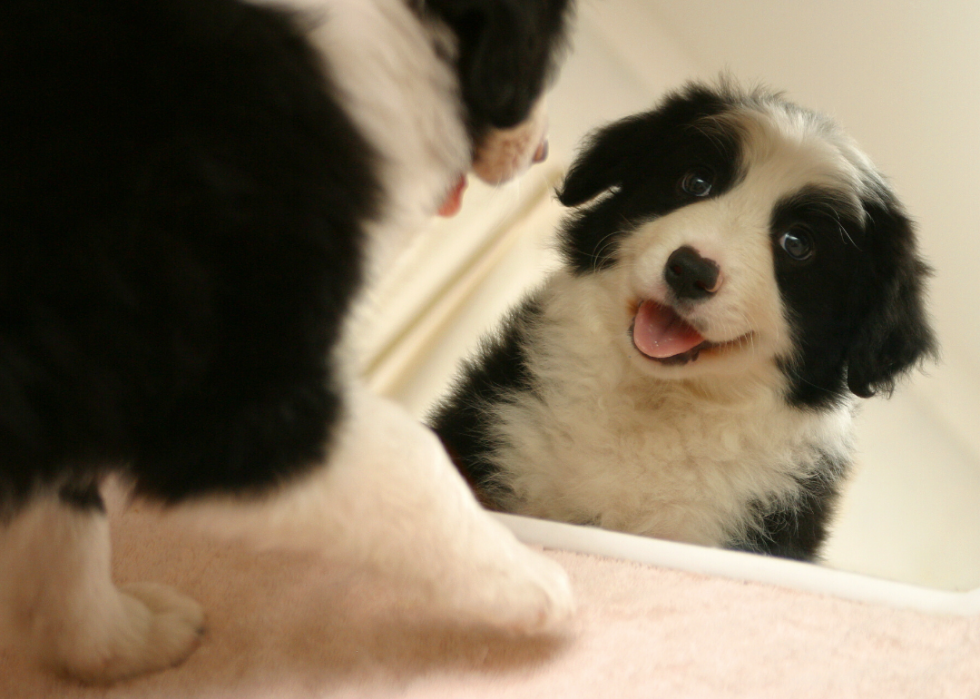
Dogs don't recognize themselves in a mirror but may have self-awareness
The mirror test is an experiment that's supposed to show if an animal has self-awareness. Put a mark on their body when they're unconscious, and if they touch themselves there when looking in a mirror, they know it's their reflection in the mirror. Dogs haven't been able to pass the mirror test. However, one researcher has argued that dogs do pass the test if you do it in a way that tests the sense that's important to them: they can distinguish their own urine from that of other dogs.
You may also like: 23 dogs that won't make you sneeze

Your dog can see better than you in dim light
A dog's retina contains mostly the kinds of receptors called rods, which require less intense light to function, and fewer cones, which are responsible for color vision. They have only about 3% cones, compared to a human's 5%, so they can see better than humans in the dark.
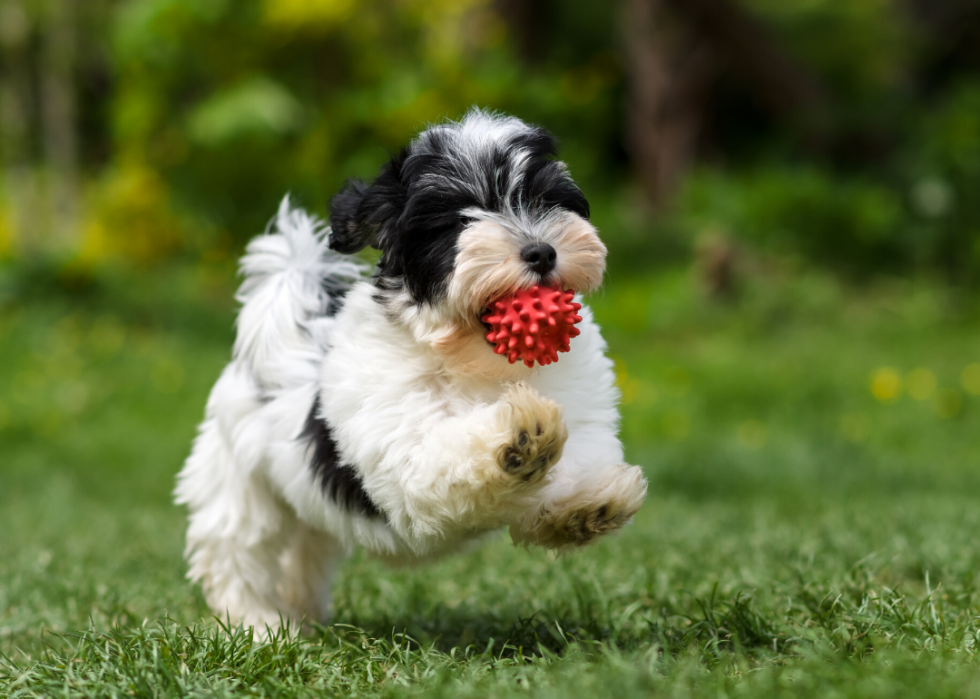
Dogs can see colors
It's often claimed that dogs can't see color, or that they can't tell the difference between red and green, but this is an oversimplification. Dogs have only two types of cones where humans have three; while research on how dogs' color vision works is still ongoing, experiments have shown they can distinguish colors. They can also use other cues, including brightness and intensity, so no need to throw away your red balls—they can find them on the green grass.

Dogs can hear much higher pitches than humans
The highest pitches discernible to the human ear are around 20 kilohertz, whereas dogs can hear up to 45 kilohertz. This ability probably evolved so they could hear the high-pitched sounds of small prey like mice. However, while dogs can hear those "silent" dog whistles that you can't, high-frequency sounds don't carry as far or pass through objects, so they're only useful in limited situations.
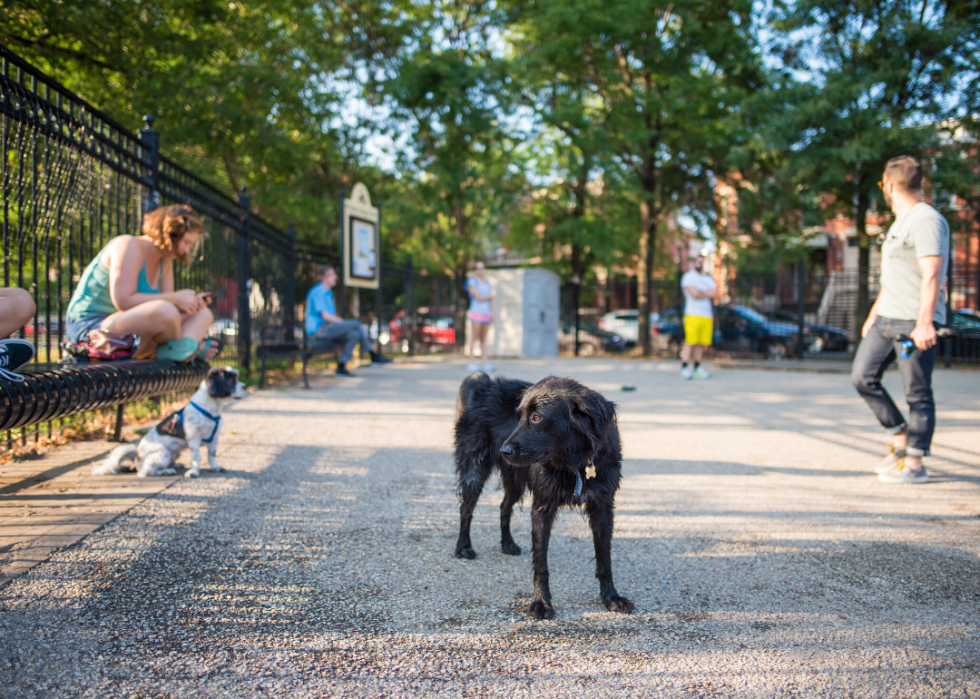
Dogs can pick their name out of background noise, but not as well as people can
Ever notice how your own name seems to jump out at you from the sounds of a crowd? Scientists call this the "cocktail party effect," and it's been tested in dogs. They can hear their name when it is the same loudness as the background noise—something human infants can't do. However, human adults can even hear their name when it's softer than the background, which dogs can't. So be patient with your dog in an extremely noisy place—he may not just be ignoring you.
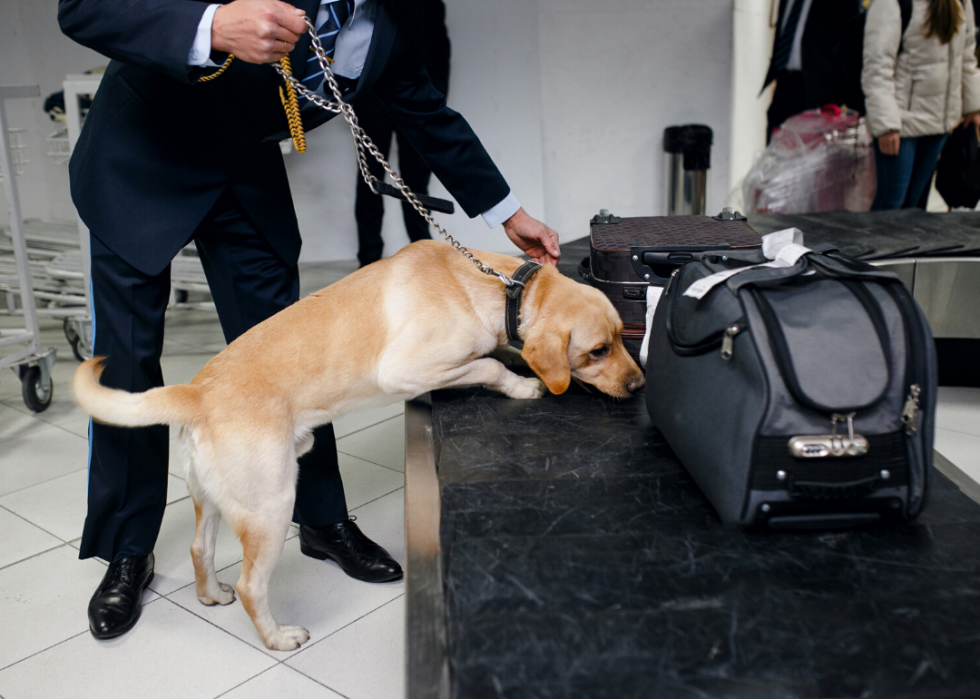
Dog noses are still better than human technology
Despite years of research and billions of dollars of investment into artificial scent detection, dogs still beat technology. High-tech sensors built by the military to detect improvised explosive devices (IEDs) only detect about half, while dogs can find 80%. And while we now have systems that can detect a smaller amount of a chemical than a dog can, they're huge and complicated and can't be used in the field. You can bring a sample to the machine, sure, but it can't go out and hunt for it as a dog can.
You may also like: Dog breeds that have attacked the most people
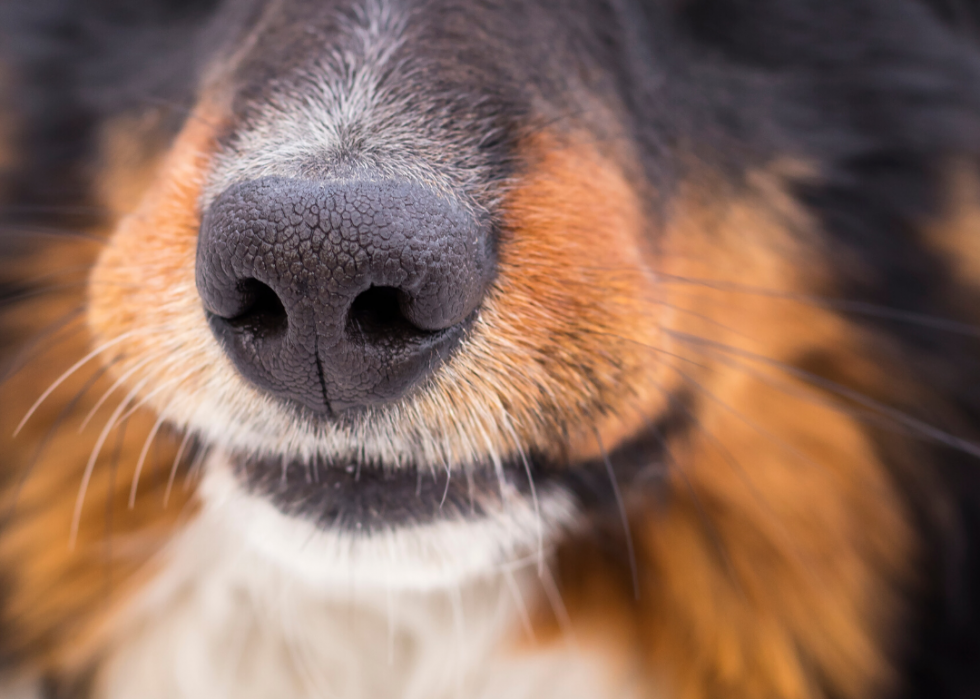
A dog's nose can detect heat, too
A recently published study has discovered that dogs can detect weak thermal radiation—or warmth—with their noses, at a distance. Dogs could reliably tell the difference between two objects, one warm and one room temperature, that were 1.6 meters away, even though they looked and smelled identical. Functional magnetic resonance imaging showed that a particular part of their brain was activated when detecting the warmth.
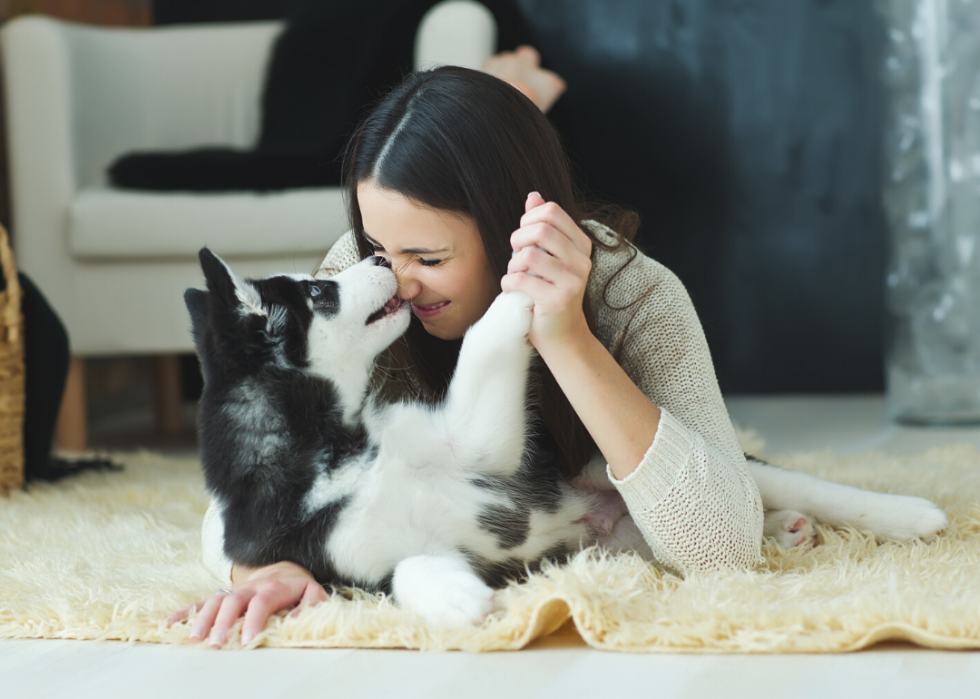
Your dog loves you for more than the treats
Neuroscience has shown that your dog really does think you're special. Functional magnetic resonance imaging of dog brains show that the caudate nucleus, which responds to something pleasurable, shows a more robust response to the smell of a familiar person than to that of a stranger or a familiar dog. And it's not just because you feed him. In another study, dogs' brains showed just as strong a response to the expectation that their owner would appear and talk to them as to the anticipation of a treat.
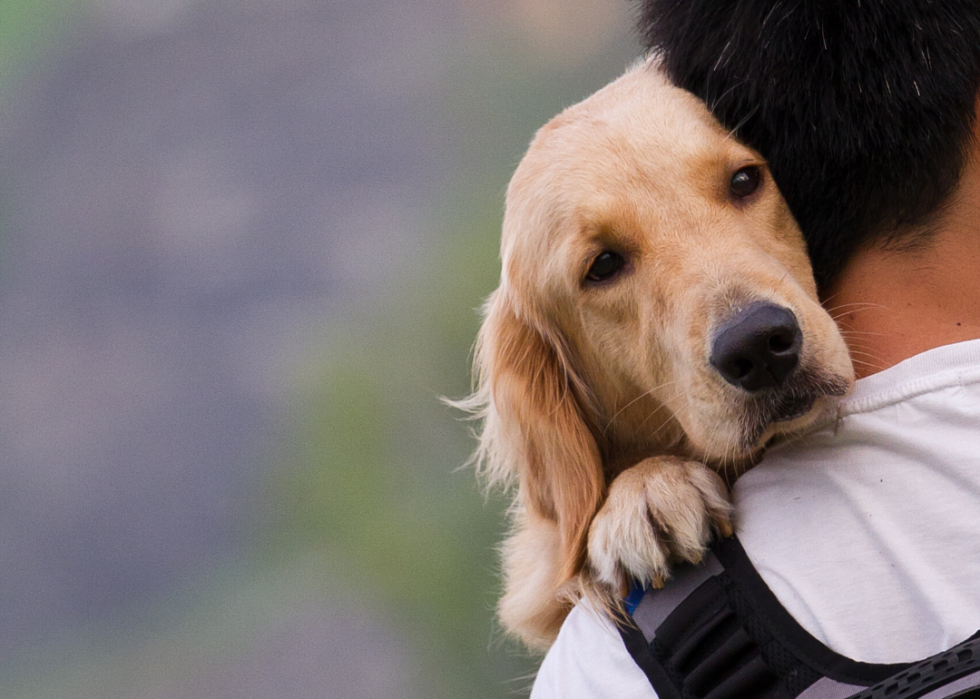
Your relationship with your dog is similar to the parent-child relationship
Behavioral research has shown that dogs rely on us in many ways, just like children rely on parents. Both dogs and infants feel more secure about exploring when their caregiver is present. In experiments, when a baby sees something scary, they decide whether to approach depending on whether their parent acts like the thing is OK, and dogs do the same with their owners.

Dogs actually like baby-talk
You may feel embarrassed when someone catches you talking to your dog in a high-pitched voice, but you don't have to be, because a study has shown that dogs prefer it. And actually, we don't talk to dogs exactly like we talk to babies—we use the same pitch and intonation, but we intuitively leave out the vowel exaggeration that's thought to help babies learn to speak.
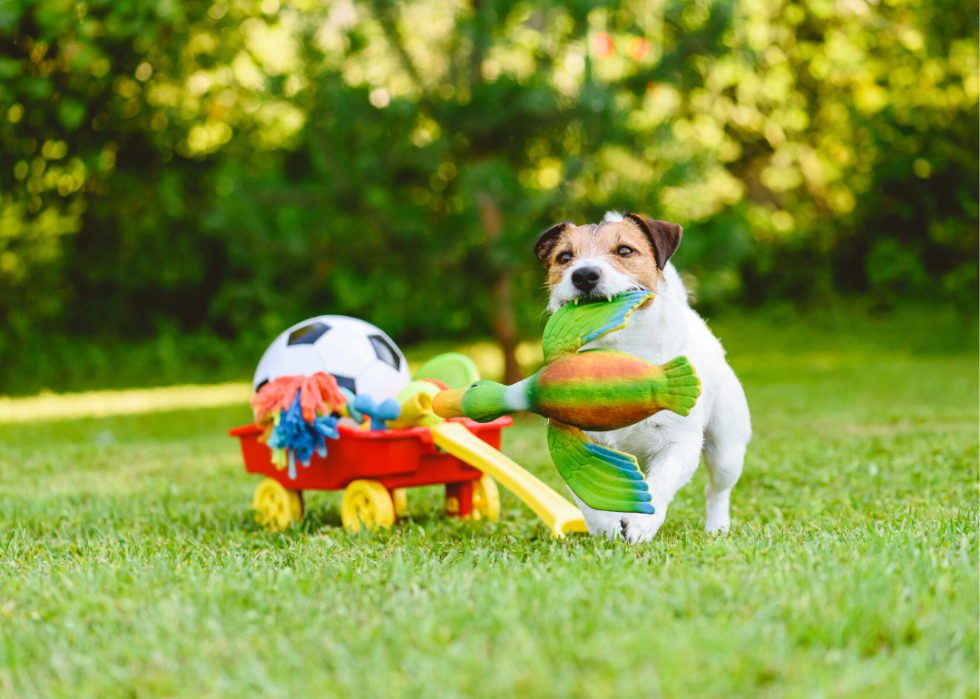
Verbal communication works for dogs, but visual is better
Dogs definitely can learn to respond to human language: One famous border collie named Chaser knew over a thousand words. But visual signals come more naturally to them. In one study, dogs learned to fetch objects by their name and by pointing. Then, experimenters tested what happened if the commands contradicted each other. They found that dogs would fetch the object pointed to, rather than the one named. So while using gestures for commands seems a bit awkward if you're not a professional trainer, it's easier for your dog to understand.
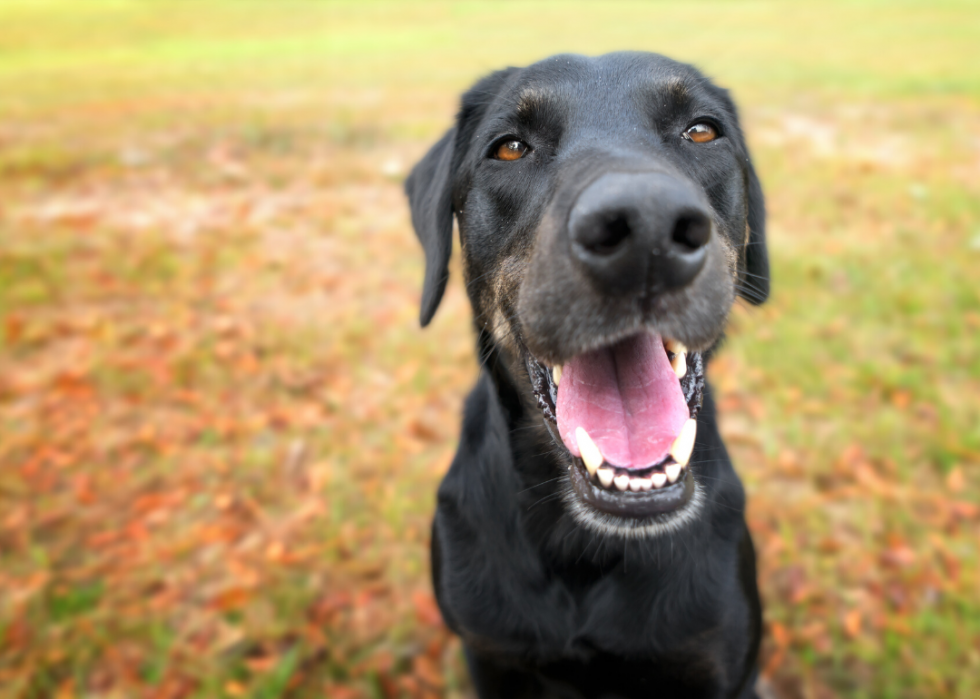
Dogs can tell what our facial expressions mean
Dogs are good at reading our emotions. In fact, they can tell whether we're angry or happy just from our expressions in photos, without the help of body language or our voices. In one study where dogs learned to tell the photos apart by being rewarded with a treat for touching them, dogs who were treated for touching the angry face learned more slowly, because they seemed to be reluctant to approach it.
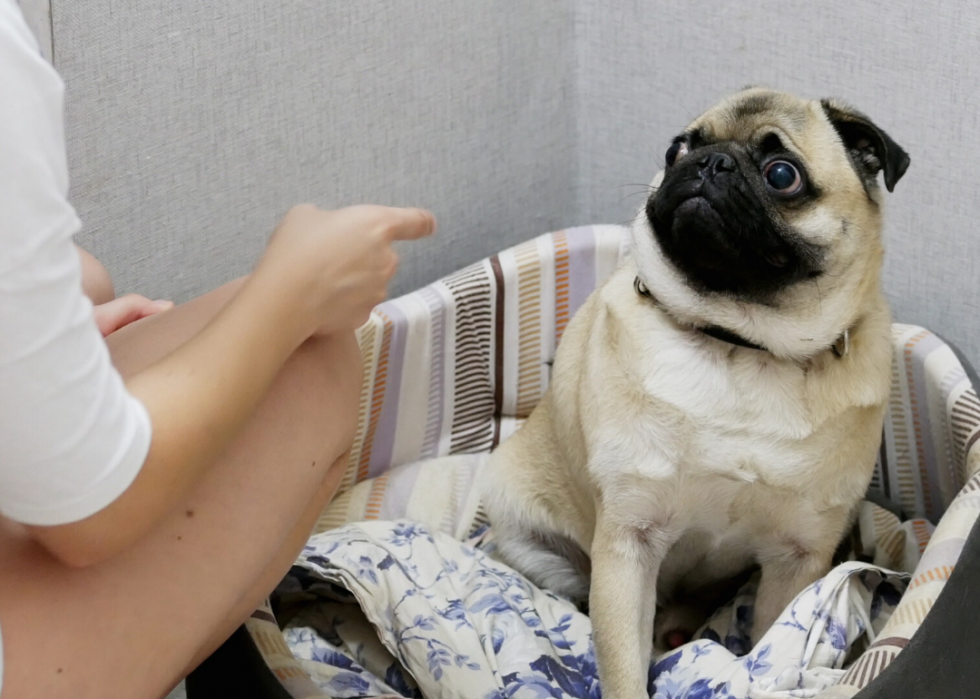
That guilty look doesn't mean what you think it does
Owners think they can tell when their dog has done something wrong because they show a "guilty look." But a study showed that dogs gave the guilty look when their owners believed they'd done something wrong, even if they hadn't. And they didn't give a guilty look when they actually had disobeyed, but the owner believed they had been obedient. The look is a reaction to the owner's anger and fear of being punished—not to what the dog itself has done.

Dogs can tell we are distressed—but don't expect them to solve the problem
Your dog may seem to know when you're sick or upset and need comforting, and some studies have supported this. In one study, dogs were in a bigger hurry to push through a door to get to their owner when she was crying than when she was humming. But don't expect them to rescue you like Lassie does in the old movies. In another study, dogs did not try to get help from a bystander when their owner pretended to be stuck underneath a fallen bookcase.

Dogs have evolved a special muscle to make puppy dog eyes
You know that sad look your dog makes when she wants your food? Dogs actually have a special muscle to lift the inner eyebrows to make that look, which is not found in wolves. To human eyes, the expression makes them look babyish and sad, so we probably accidentally selected for it in the course of domestication because we find it endearing, and it triggers a nurturing response.

Dogs have evolved to be able to digest grains
Advertisements tempt you to buy dog food because it's full of meat, and grain-free dog food seems to be a trend that is here to stay. But dogs' bodies have changed in many ways in the course of domestication, including their digestive system. A study comparing dog and wolf DNA found that they have evolved to have more copies of the gene to produce the protein that breaks down the starch in the intestines, and lab studies showed that they should be five times better at digesting it. This change allowed them to take advantage of a wider range of our food sources as they evolved to live alongside humans.
You may also like: Most popular dog breeds in America
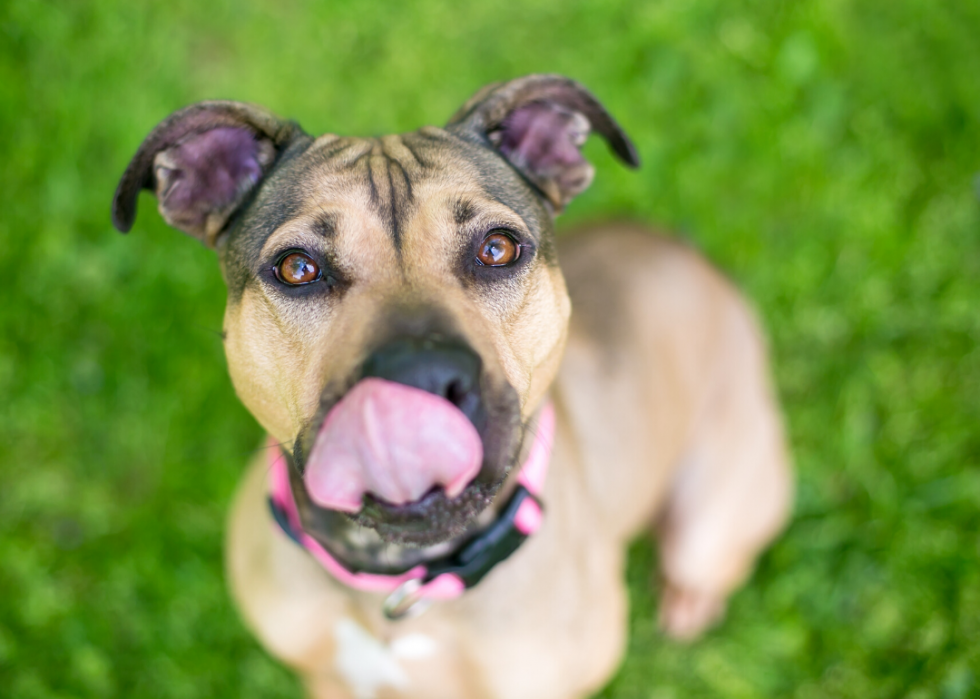
Licking is a sign that your dog is anxious
If your dog licks their lips or 'air-licks' when there's no tasty food around, it probably means they are stressed or worried. It's thought to originate as an appeasement gesture that attempts to defuse conflict with other dogs. In one experiment, dogs licked more often when experiencing an unnerving social situation, like a strange person walking directly toward them. In another, they licked more frequently when looking at photos of angry faces than photos of happy faces.
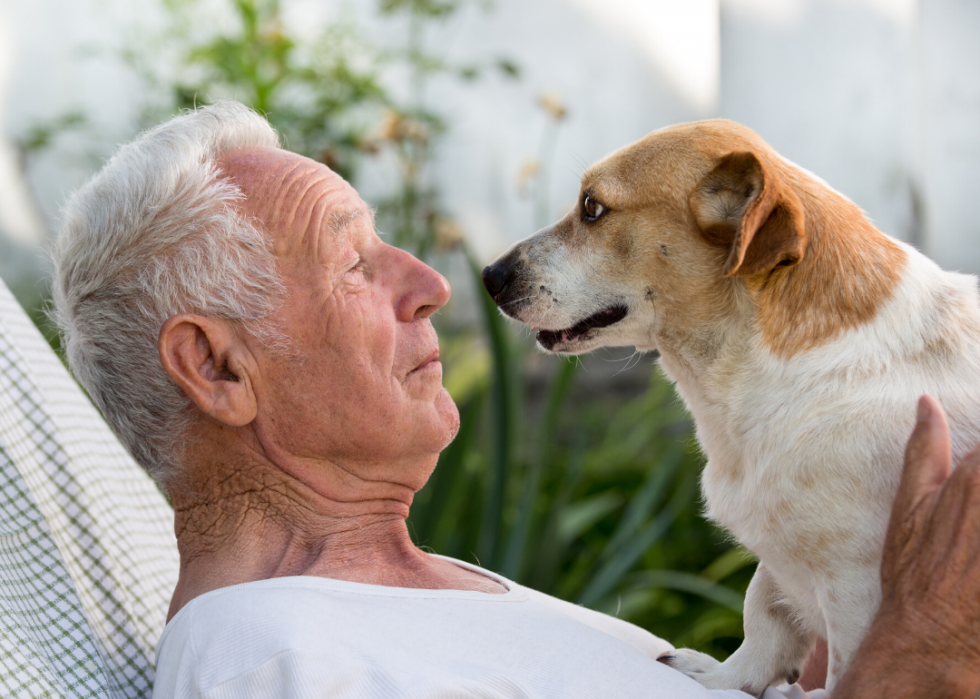
The hormonal system of dogs has evolved so they can live with and even love us
Domestication causes changes in an animal's body, making them less fearful around humans. Rather than fleeing in terror like a wild animal, dogs actually produce fewer stress hormones in our presence. Interacting with a person also causes dogs to produce spikes in hormones associated with pleasure and bonding, including oxytocin, and one study showed a particularly strong effect of gazing into one another's eyes, a similar effect found in mothers and infants.
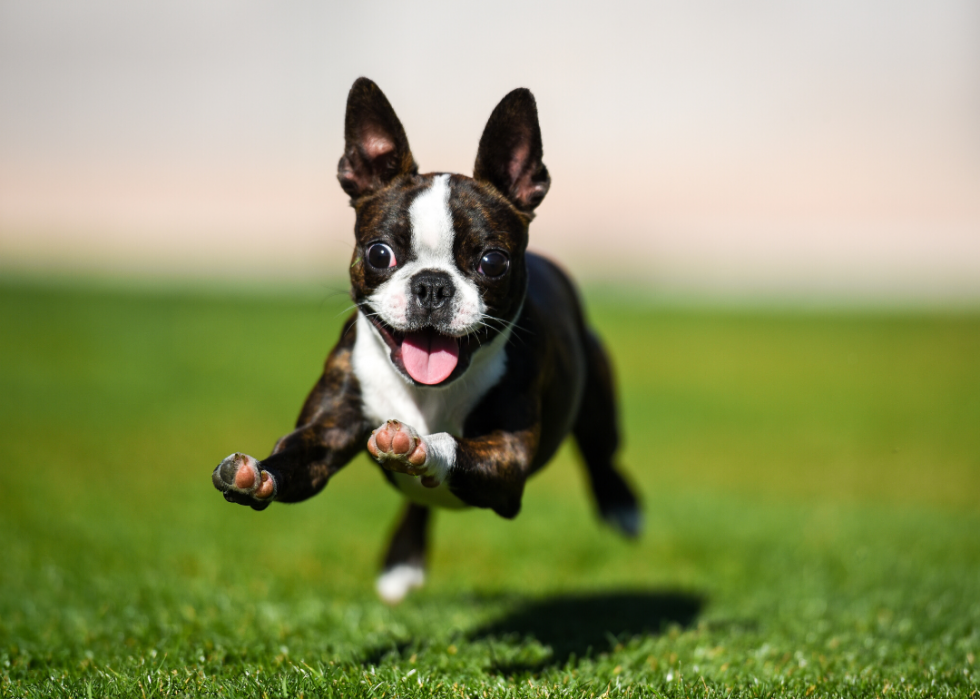
Dogs get runner's high
A study found that after running, both dogs and humans have blood elevated levels of an endocannabinoid, a neurotransmitter that signals the reward center of the brain that something is pleasurable. Unlike humans and dogs, this pleasurable effect isn't found in ferrets, a species that doesn't run long distances to catch prey.
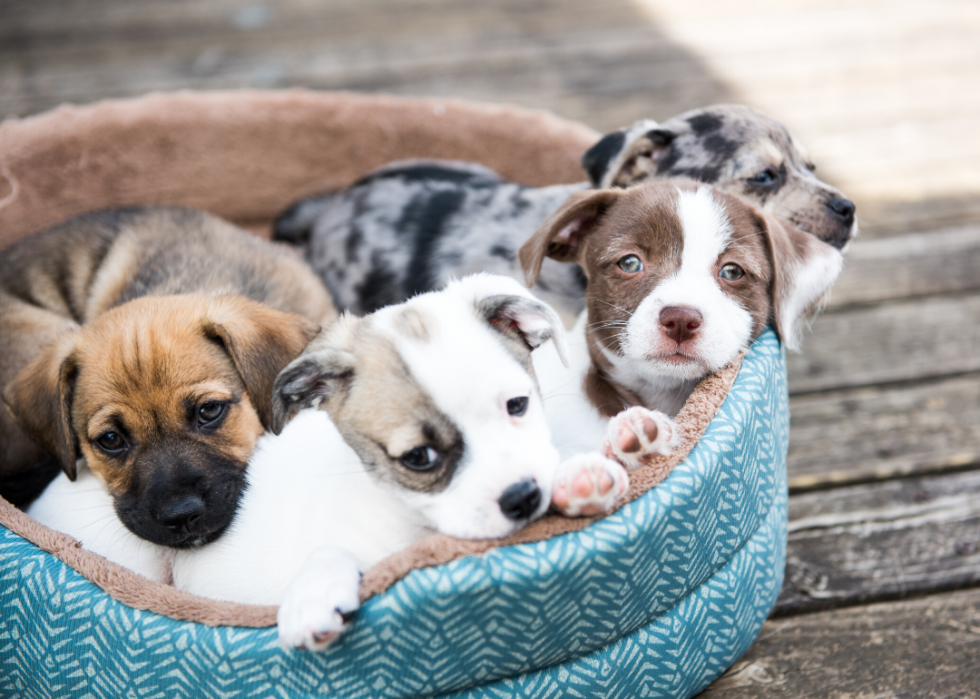
Puppies are the cutest right when they need us most
Mother dogs wean their puppies at around eight weeks of age. In a study where people were asked to rate the cuteness of dogs at different ages, it turns out that eight weeks is when we find puppies cutest. This is when they're sent away to fend for themselves and need to find a human to bond with and care for them, and they've evolved to be most appealing to us at precisely that time.
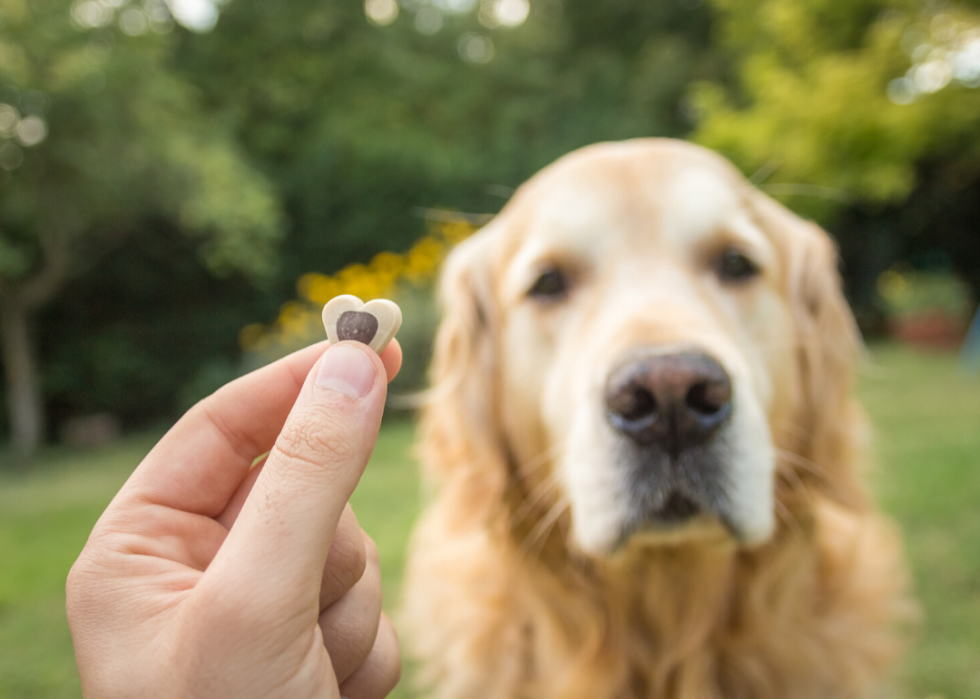
Dogs can count, to some extent
Using similar experimental methods as those used on infants, dogs can be shown to have a sense of numbers. If you show them a treat, hide it with a screen, appear to add a treat, and then lift the screen to reveal three treats, they will look at it for longer than when they see the expected two treats. Brain scanning studies also show that they use the same part of the brain as humans to process numbers.
You may also like: Least popular dog breeds in America

One year of a dog's life does not equal seven human years
This commonly repeated equation has no basis in fact. There isn't one simple number you can use because humans and dogs age at different rates. A 1-year-old dog is in mid-to-late adolescence, not equivalent to a 7-year-old child. A 2-year-old dog is a young adult. After that, you could roughly say it's one year to five years, but that still doesn't account for the fact that different size dogs have different lifespans (small dogs live longer than large dogs).
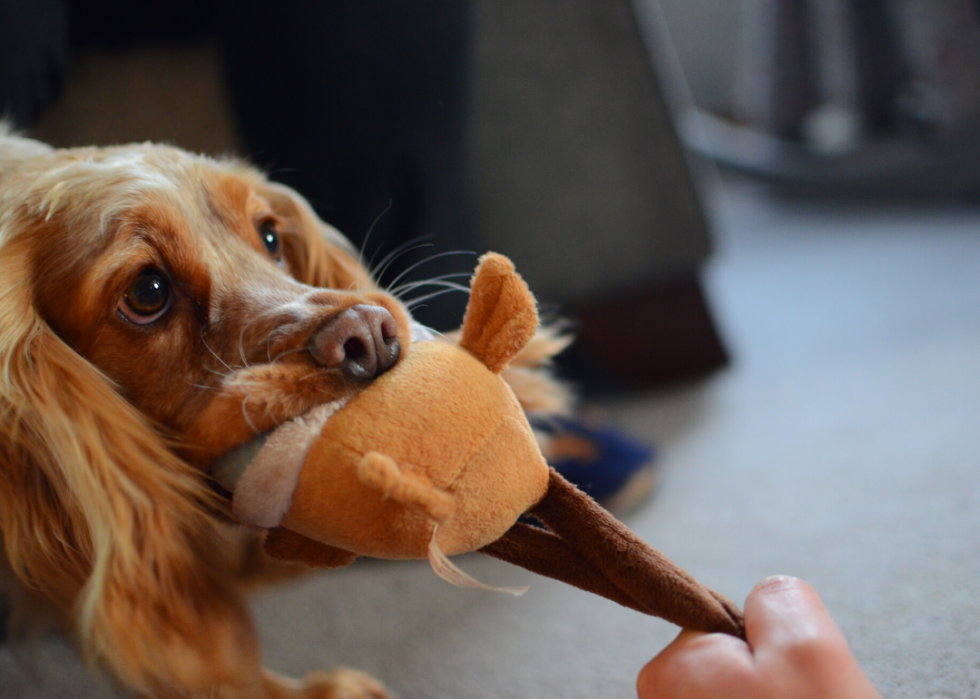
It's fine to play tug of war with your dog
Another commonly repeated bit of conventional wisdom is that you shouldn't play tug of war with your dog, because it will cause behavior problems, especially if you let him win the game. This is also largely a myth. A study tested dogs on a set of behavioral measures before and after playing tug of war and found that they increased on a quality called "obedient attentiveness," regardless of whether they won or not. There was no effect on a measure of confidence, so no evidence that the dogs became bossier or more "dominant." The most playful dogs did seek more play and attention after being allowed to win, so just don't let them win every time.
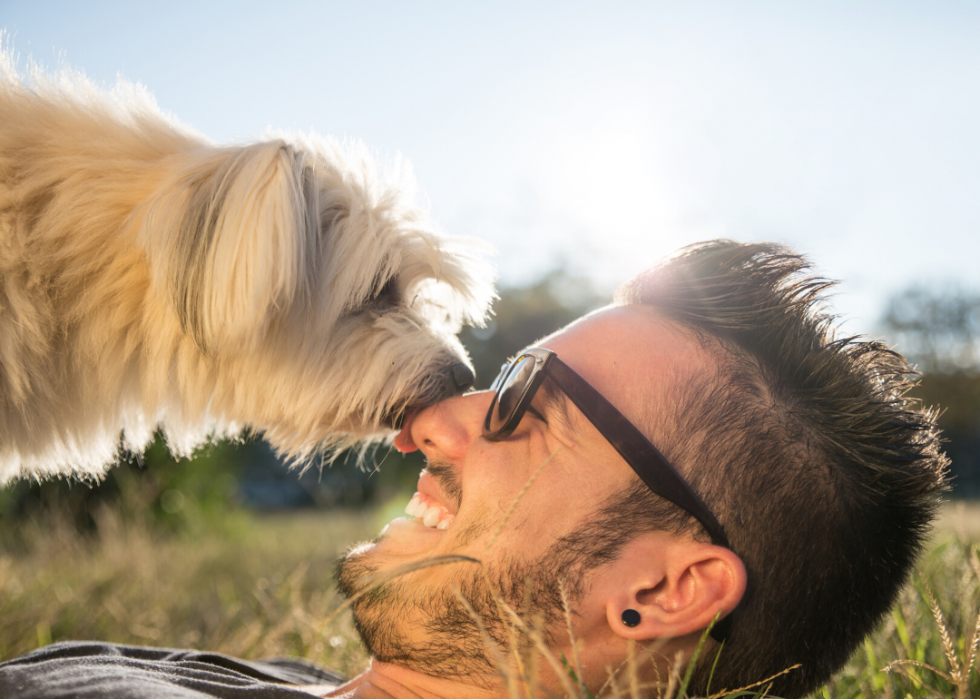
Your relationship with your dog is not about dominance
Behavior issues in dogs are often attributed to them wanting to be "dominant," but this is based on long-discredited research. It derives from a claim about wolf packs that turned out to be inaccurate because the research was done with captive groups that did not have natural relationships. What's more, dogs are different from wolves in many ways, and research with feral dogs has shown that their groups don't have the same social structure.
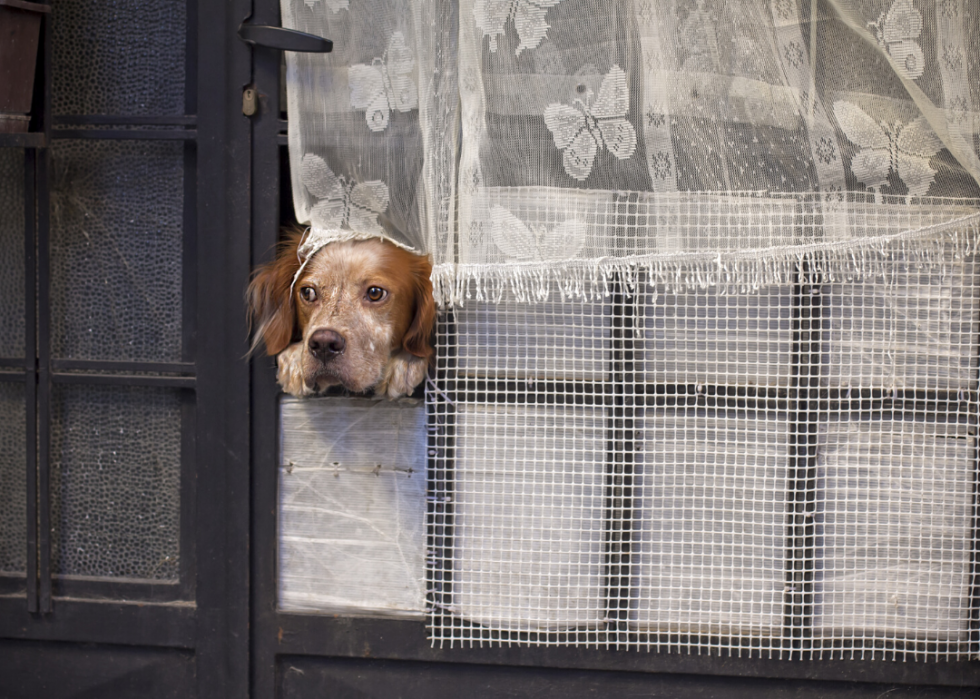
You don't need to ignore your dog when you're leaving her alone
Another behavior myth says that you should ignore your dog before leaving the house, instead of petting and making a fuss, lest you cause separation anxiety. However, a study that compared when owners petted their dogs before leaving them alone to when they didn't found that dogs that had been petted showed more calm behaviors and a lower heart rate.
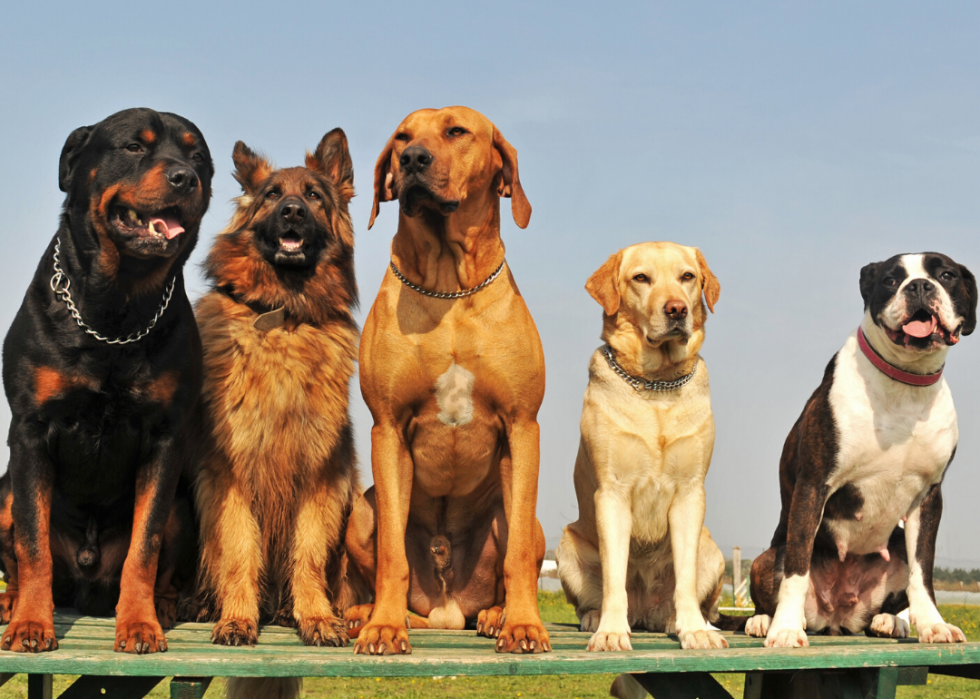
There are more dog breeds than you probably think
The American Kennel Club (AKC), the major dog breeds registry in the U.S., currently recognizes 197 breeds. But the Fédération Cynologique Internationale recognizes more than 300 breeds worldwide.
You may also like: Most popular dog breed the year you were born
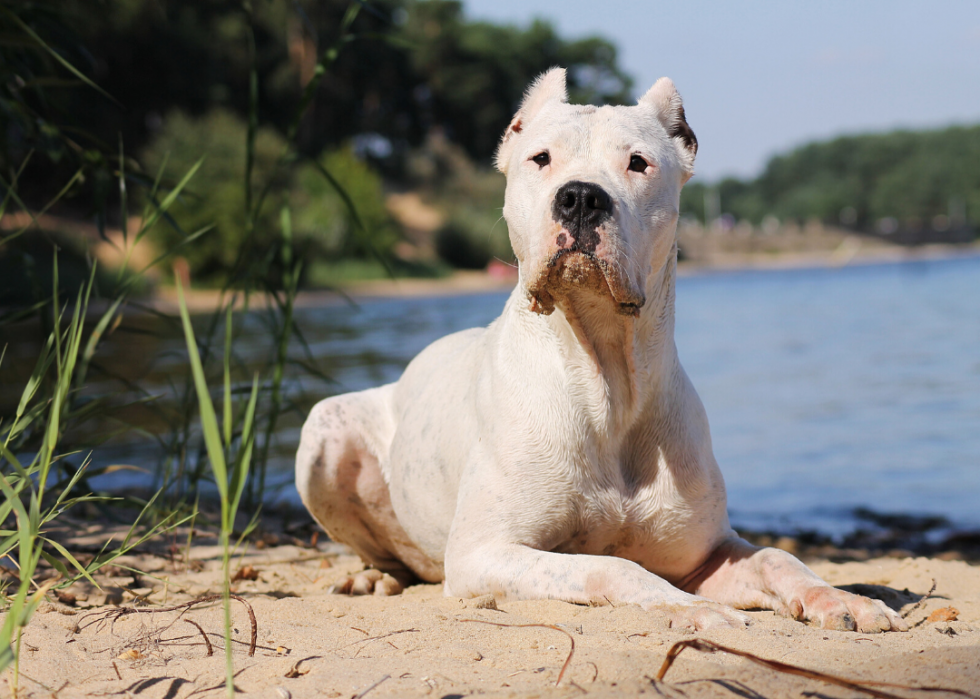
New breeds get official recognition all the time
It makes sense that there must be more breeds than are part of a registry like the AKC, because the "new" breeds have to come from somewhere. The AKC recognizes new breeds every year.
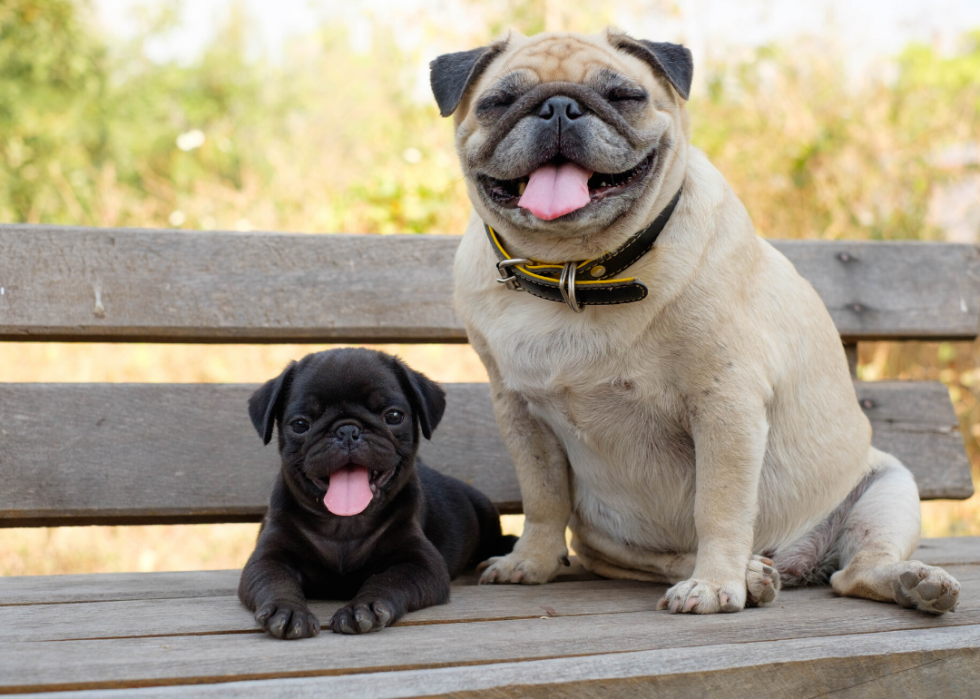
Our concept of breed in dogs is fairly recent
Today a dog breed is defined by pedigree and form: A pug is a pug because both its parents were pugs and because it looks a particular way. But this idea of "purebred" only goes back to the late 19th century. Before that, dog breeds and types were defined by their function rather than their looks or who their parents were.
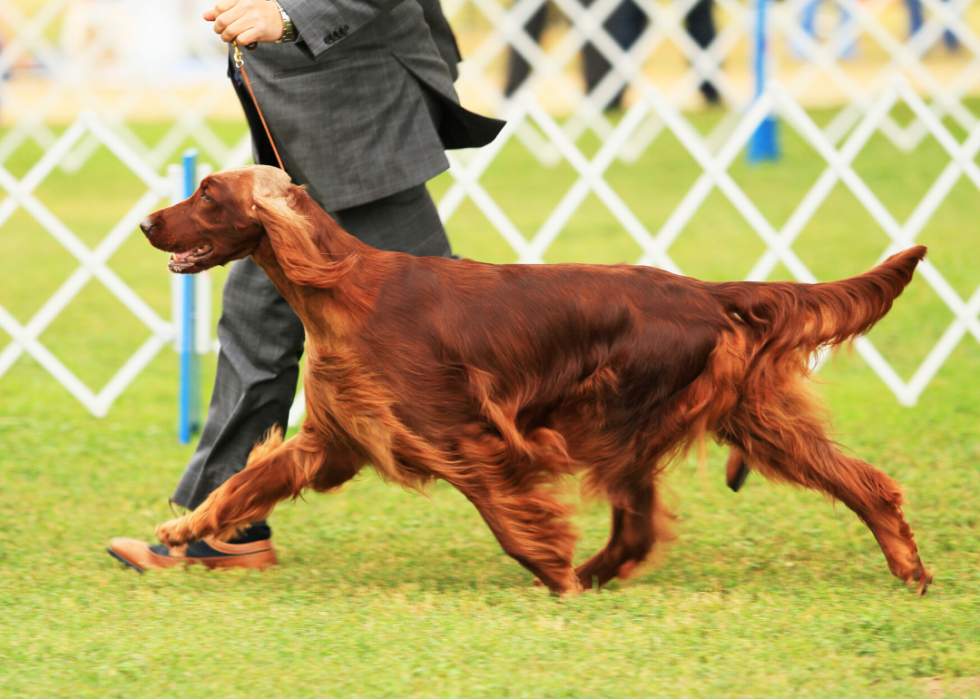
The first purebred dogs in the U.S. were recognized in 1878
The first nine purebred breeds were recognized in the U.S. by the AKC in 1878. They were mostly hunting and sporting breeds, including some that are uncommon today, like the Clumber spaniel and Gordon setter.
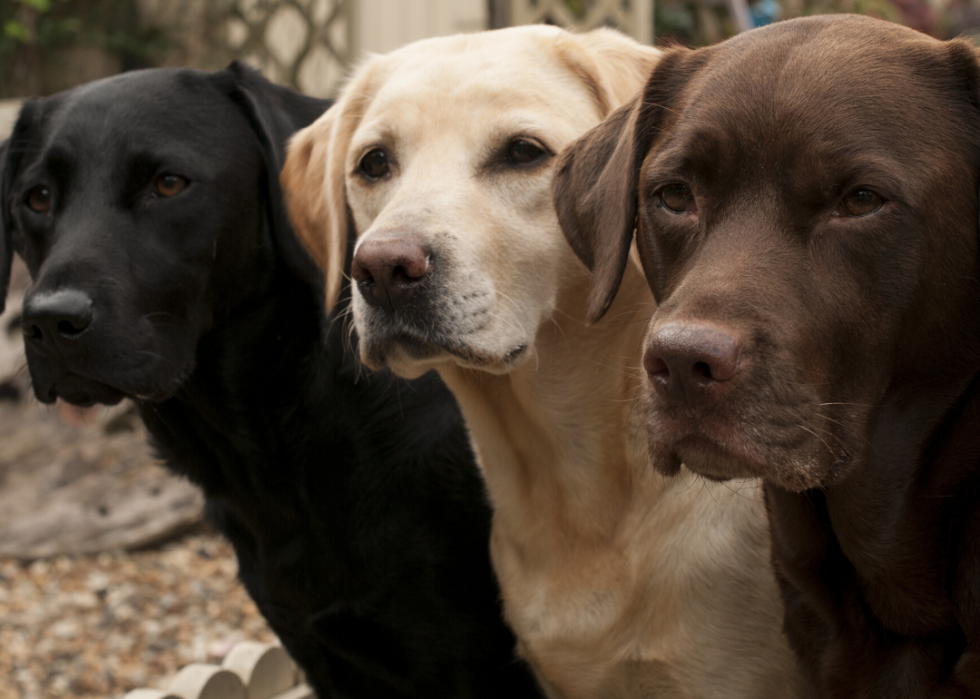
The Labrador retriever is the most popular purebred dog in the U.S.
According to the most recently released AKC statistics, the most popular breed is the Labrador retriever; it's held that spot for 28 years. But this is just among dogs registered with the AKC, and there's no way of accurately counting unregistered purebreds and mixed-breed dogs.
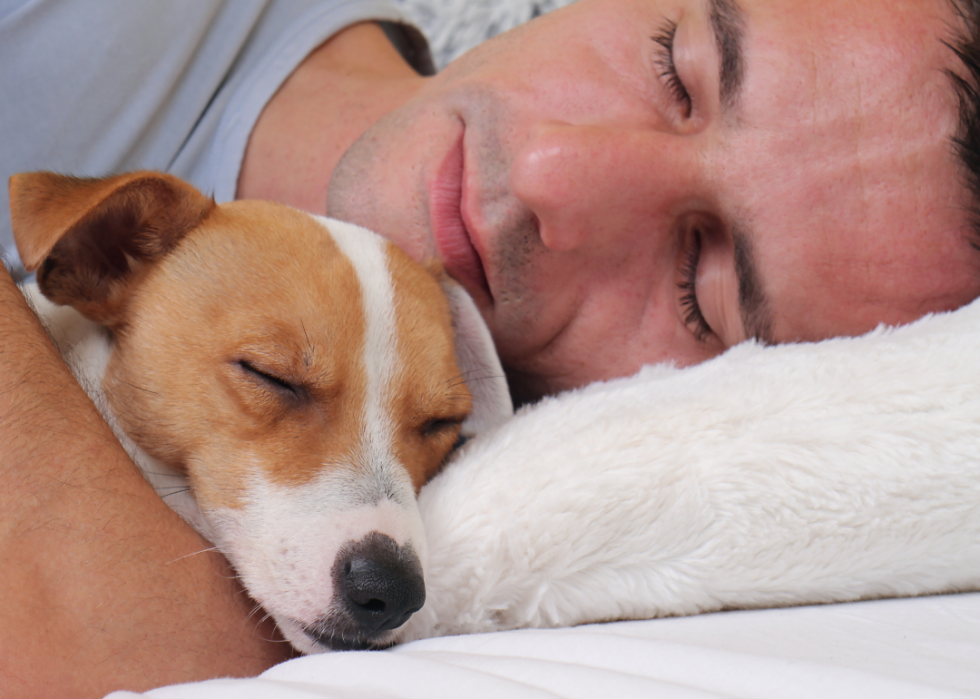
You might get better sleep next to a dog than a spouse
Many of us let our dog sleep on the bed, and advice about whether this is a good thing to do is all over the place. A recent study found that at least for women, it's more restful to have a dog in the bed than another person. The findings reveal that 55% of the women who responded to a questionnaire shared their bed with at least one dog, and most reported that the dog disturbed their sleep less than a person.
You may also like: Least obedient dog breeds

Dogs yawn when their people do
Do you feel like yawning when you see someone else yawn? It's called contagious yawning, and dogs do it too. It's thought to be a sign of empathy, and a study at the University of Tokyo found that dogs were more likely to "catch" a yawn from their owner than from an unfamiliar person.
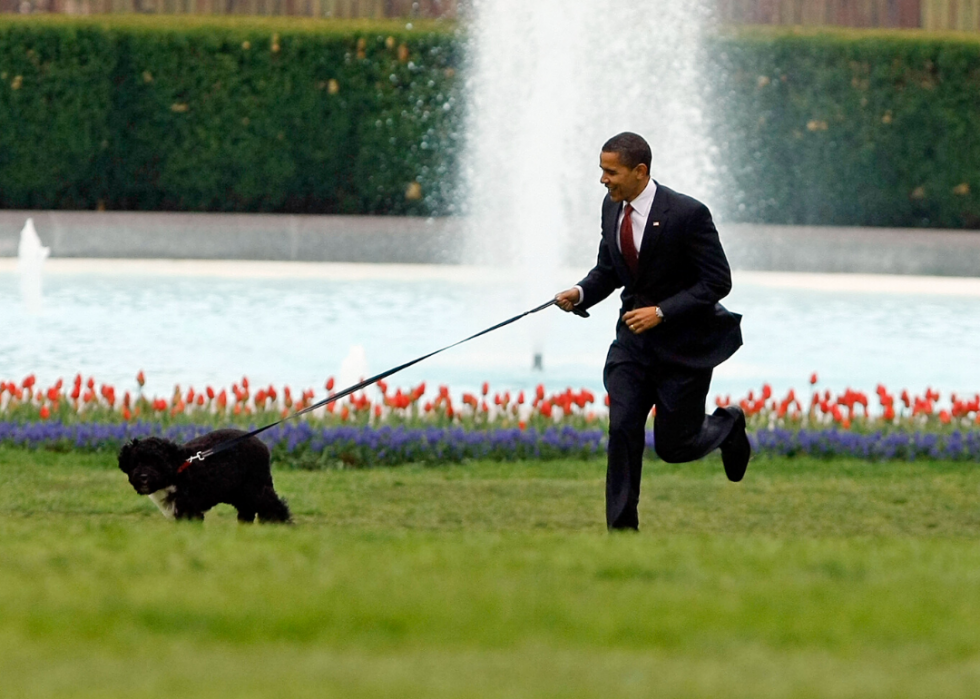
A majority of U.S. presidents have been dog owners
Most U.S. presidents have been dog people; more than two-thirds have had pet dogs while working in the White House. One is even commemorated in a presidential memorial: There's a statue of FDR's Scottish terrier, Fala, at the FDR Memorial in Washington D.C.

George Washington helped create a dog breed
The first president of the U.S. was a dog lover, and he even helped create a new breed. The American foxhound was derived by crossing his line of English hounds with a French breed he'd been given by his friend Marquis de Lafayette.
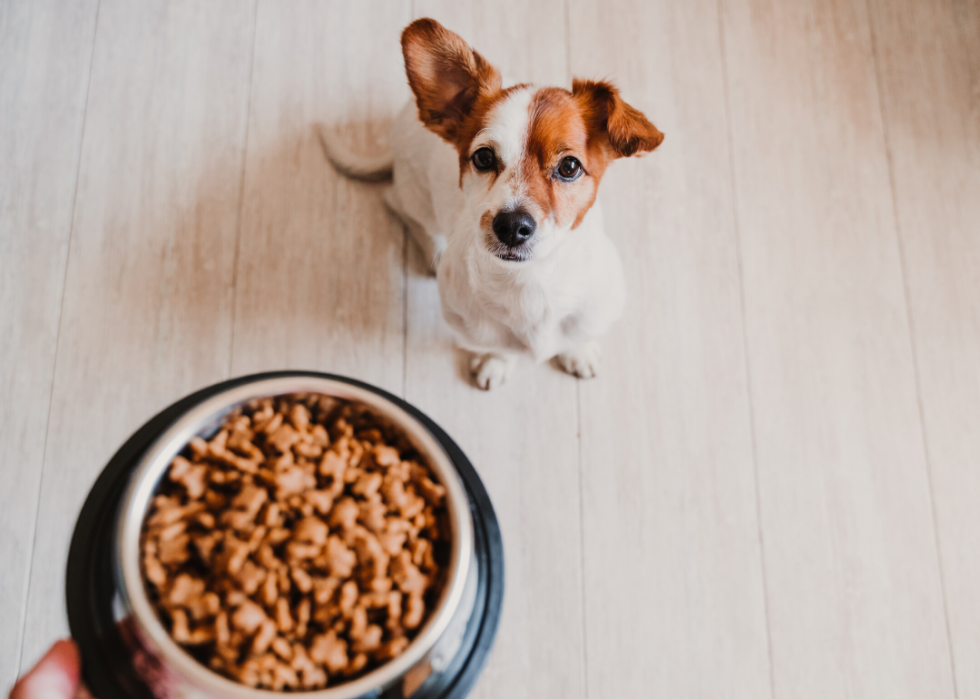
Dogs have a less sensitive sense of taste than humans
Dogs have fewer taste buds than we do: around 1,700 compared to our 9,000. This may be no surprise to anyone who's seen some of the gross things they'll eat. However, like us, most do get bored of the same flavor all the time, so vary your training treats for the better results.
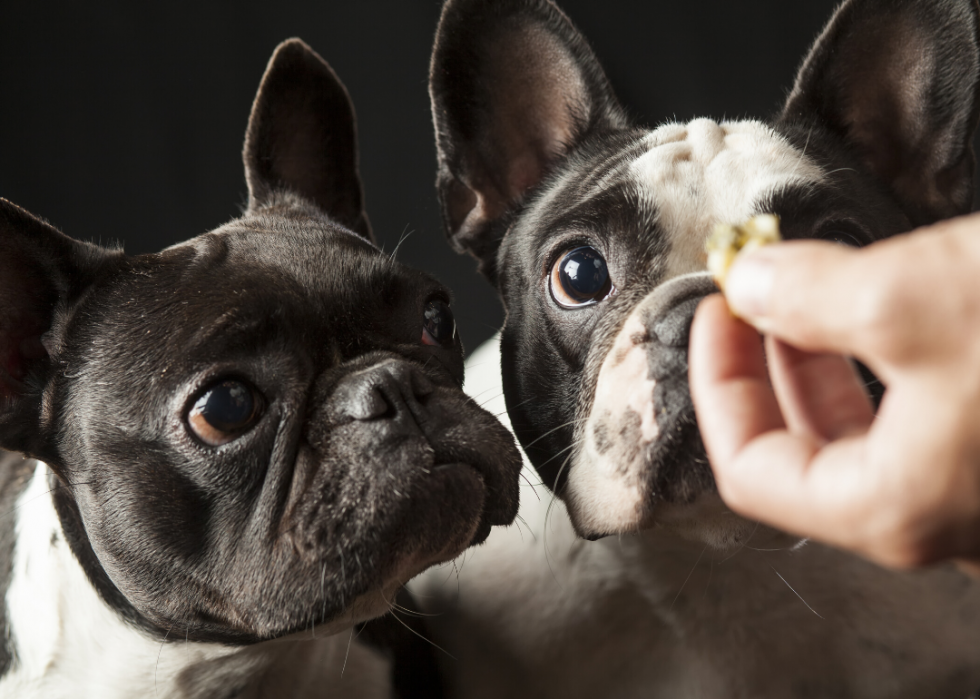
Dogs don't crave salty snacks
Dogs' taste buds respond to the same basic chemicals as ours, but there's one big difference: they don't crave salt. Because their diet in nature was heavy in meat, which contains plenty of sodium, they didn't need to evolve a drive to seek it out.
You may also like: 29 foods that are poisonous to dogs
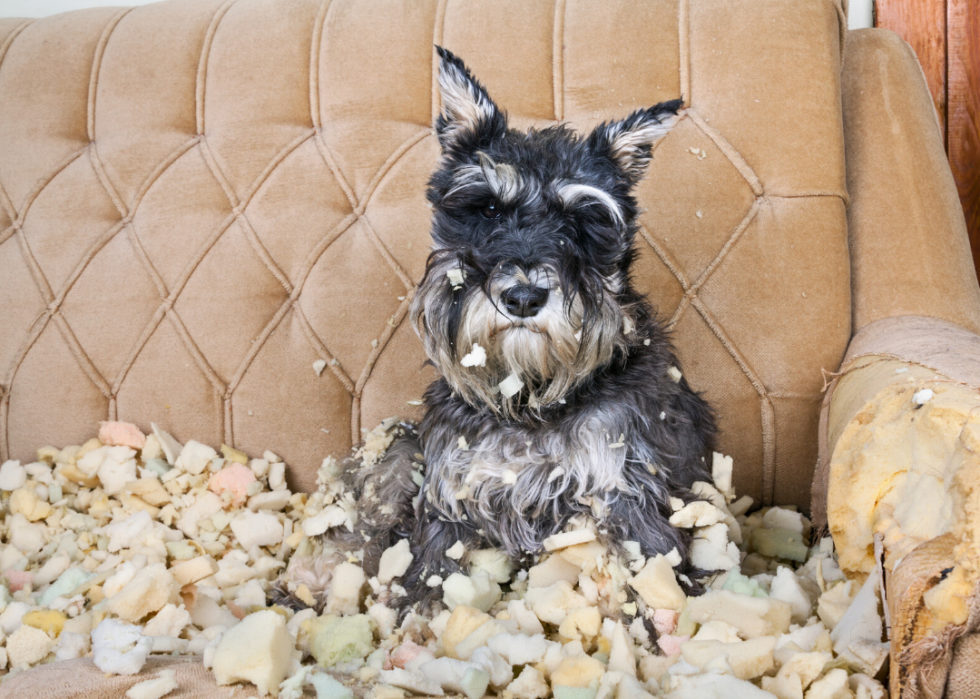
Dogs dislike bitterness, but it's not that useful as a chewing deterrent
Dogs do dislike bitterness, but the taste buds that sense it are at the back of the tongue. So those bitter sprays might keep your dog from chewing the furniture, but only once he's taken a nice deep bite of it.
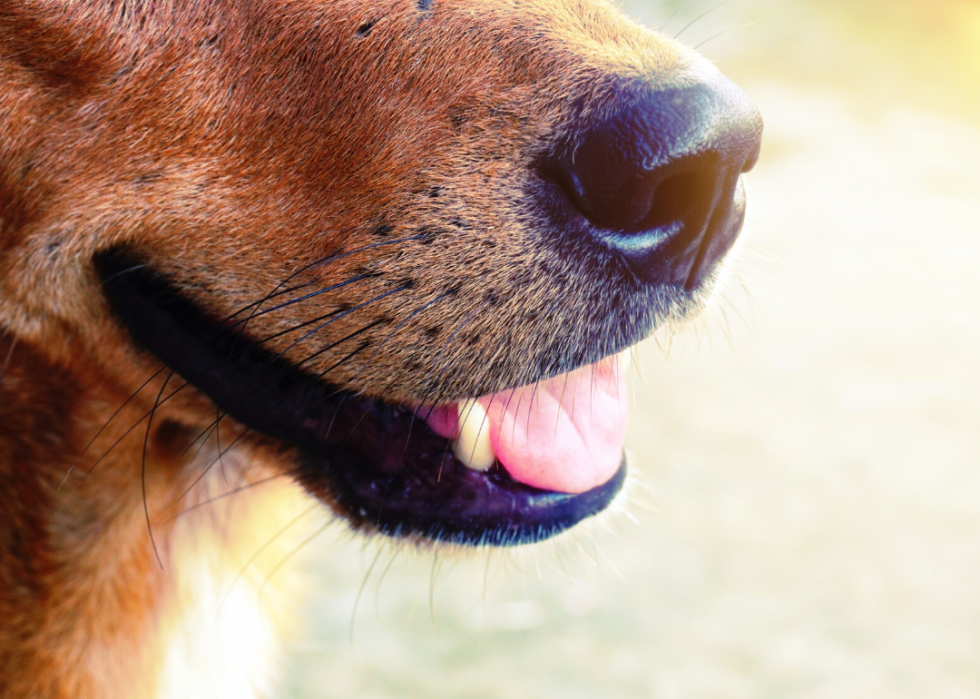
A dog's whiskers are an important sense organ
A dog's whiskers are not purely decorative. They are highly sensitive to touch, and a large part of the sensory cortex of the dog's brain is devoted to processing their messages. They are an important way they sense the world, so they should never be trimmed.
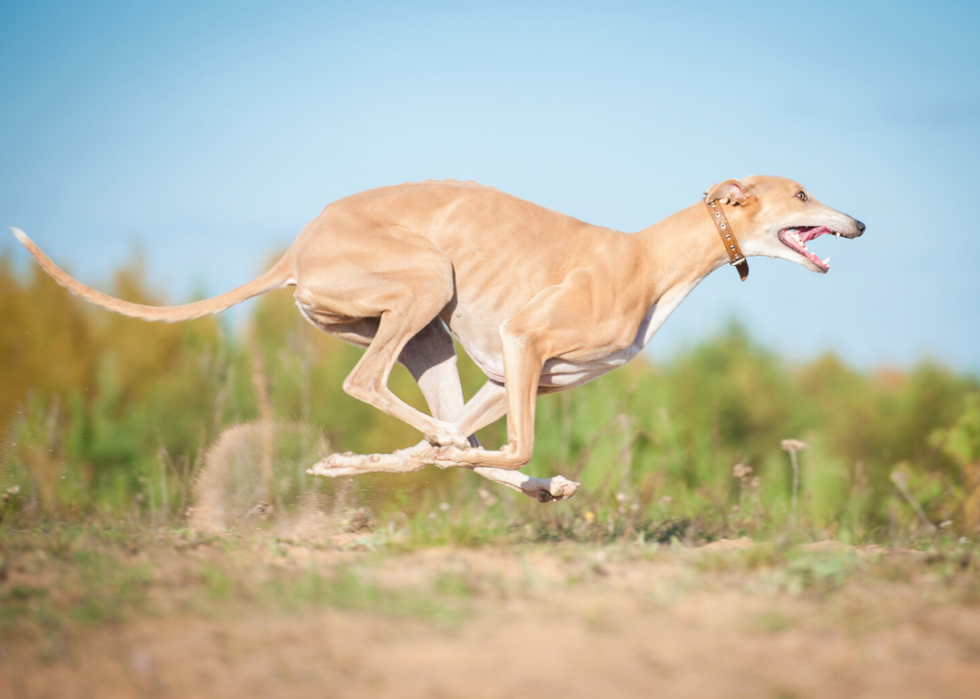
Greyhounds can run faster than the fastest human
Greyhounds are the fastest-running breed and can run over 35 miles per hour. This beats the fastest recorded speed for a human, which was around 27 mph.

Dogs can watch TV
It's sometimes been claimed that dogs can't watch TV, because their visual system needs a higher refresh rate (number of images per second) to perceive smooth motion. However, many experiments successfully test dogs with video on TV screens, and modern TVs have a higher refresh rate than old ones, so now television looks better to dogs as well as humans.
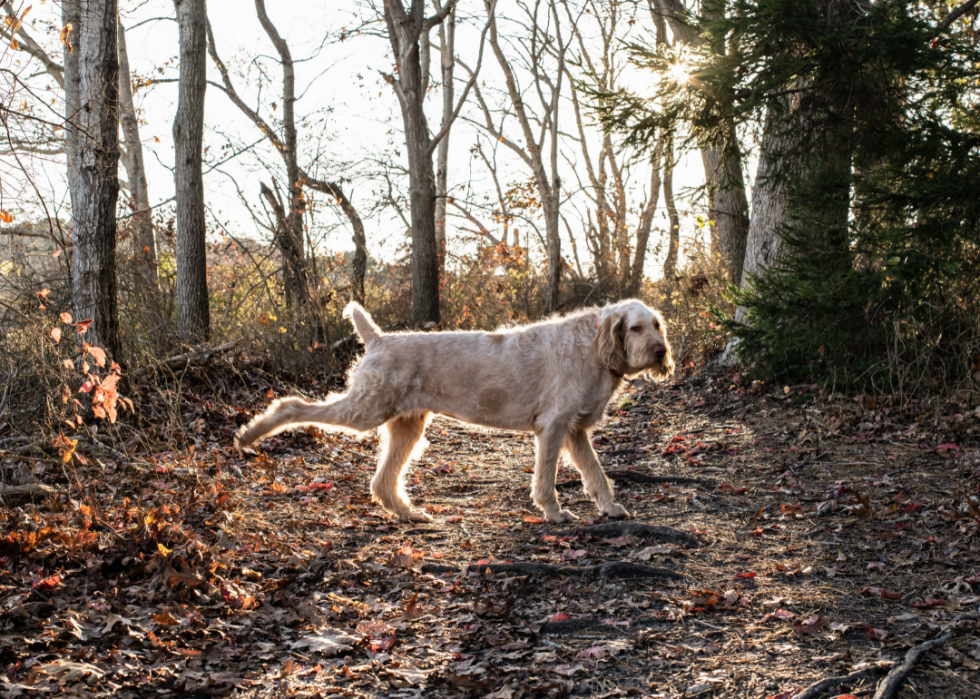
Kicking poop is a marking behavior
Many dogs kick their back legs behind them after they defecate, but they're not trying to cover it up like a cat. Rather, it's one of the ways they mark their territory, with the pheromones secreted by glands in their feet.
You may also like: Why do dogs lick people? And answers to 50 other canine questions
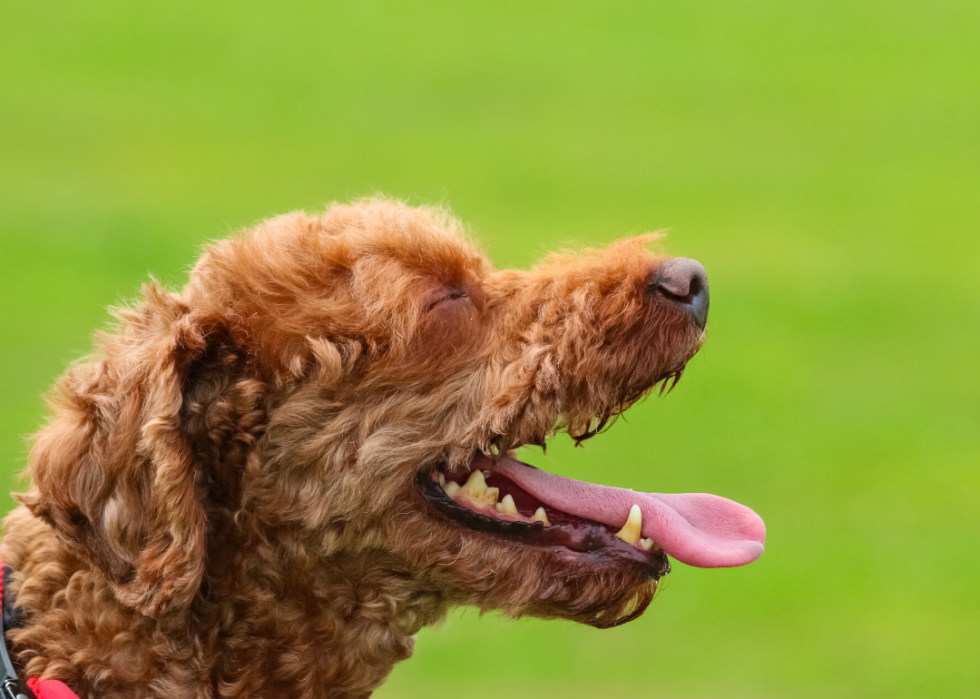
Dogs do sweat, but it's not really how they cool down
Dogs do have sweat glands, including in their paw pads, which help them release a little of their body heat. But because the rest of their body is covered with fur, sweat wouldn't evaporate to cool them off, so they mainly cool down by panting.
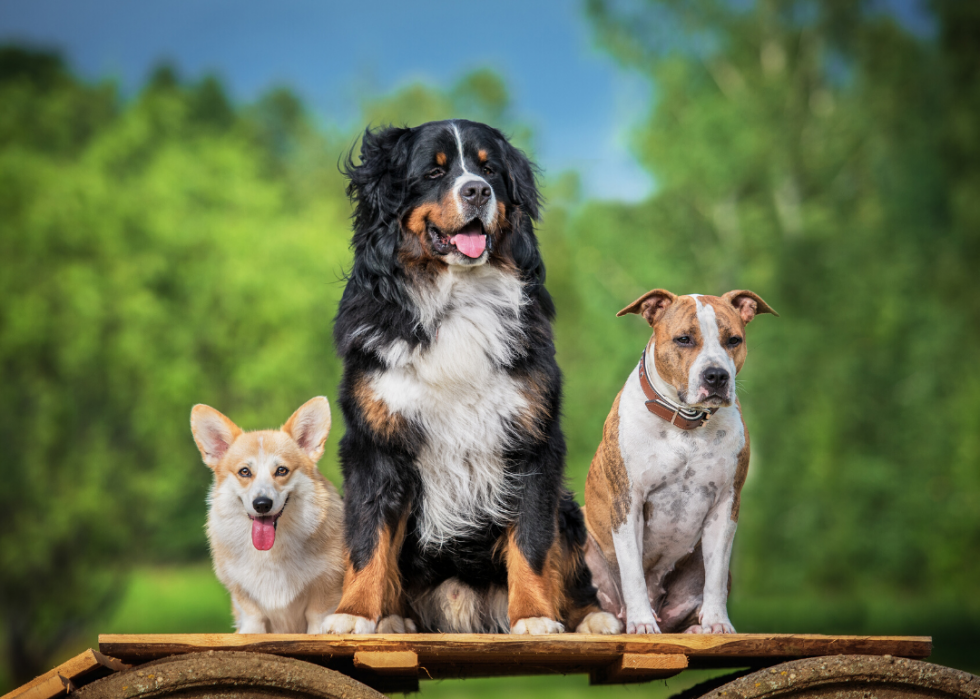
Dogs have a uniquely wide range of sizes
Dogs vary in size more than any other species of mammal. Some breeds weigh less than 10 pounds, and others can weigh up to 200 pounds. You can hold a Chihuahua in one hand, while the Irish wolfhound is typically over 30 inches tall at the shoulder.

Dogs probably dream
We'll never be able to ask a dog what he dreamed about last night, but evidence suggests that they do. Humans dream when in a state called rapid eye movement (REM) sleep, and dogs show the same sort of brain activity during sleep. So when they're twitching, foot paddling, and making noises in their sleep, they're probably dreaming.
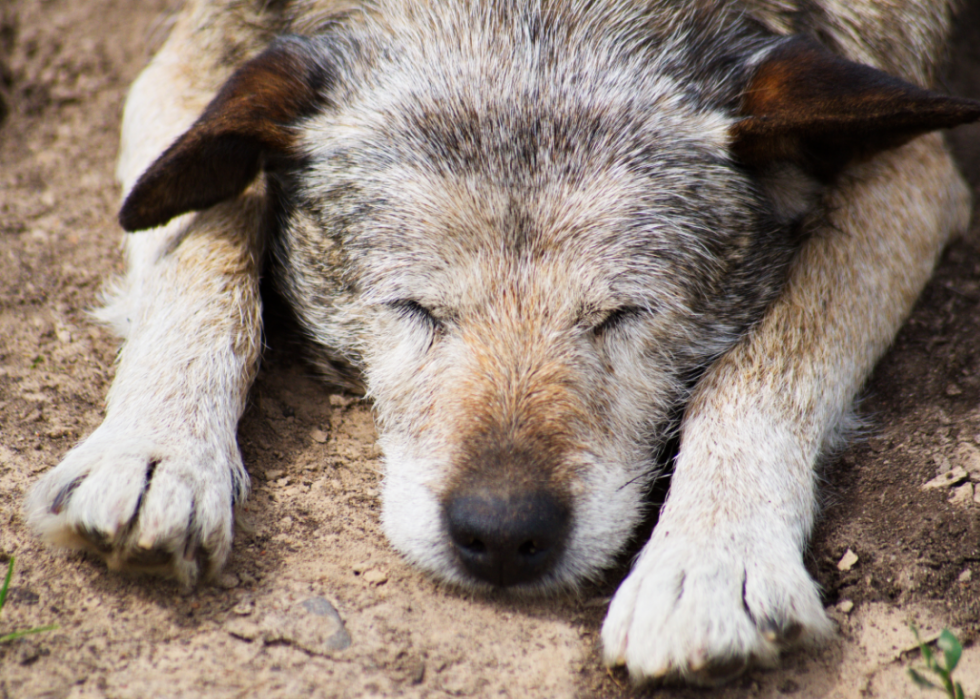
Elderly dogs can have dementia
Just like humans, dogs' brains may start to have impaired functioning in old age. Signs of what's called canine cognitive dysfunction (CCD) can include disorientation, pacing, getting lost in familiar places, and staring into space. See your vet if you notice these symptoms because some drugs and supplements can help.
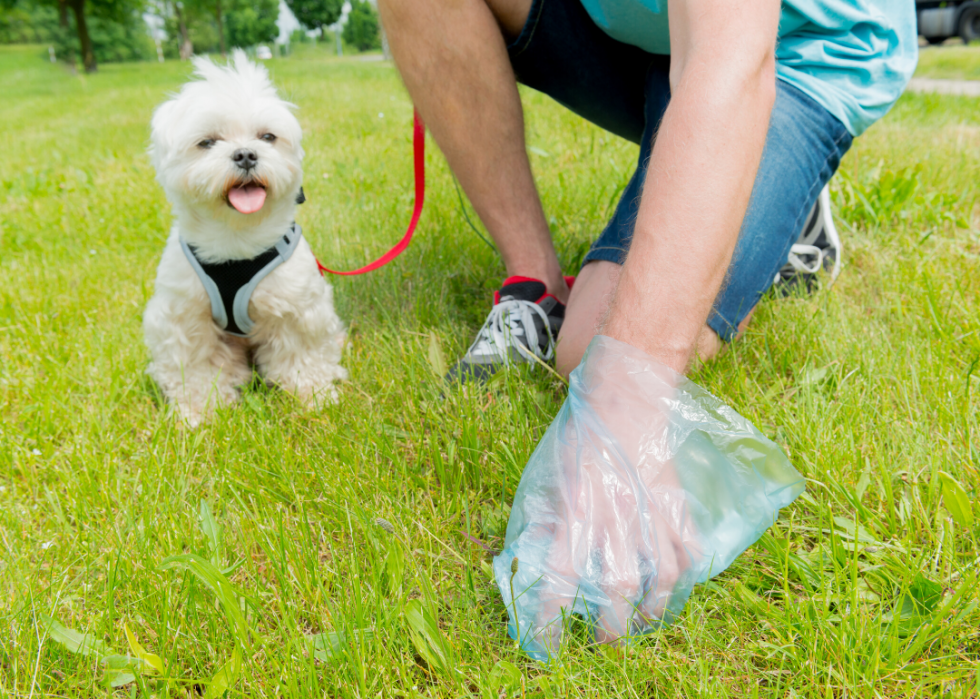
Dogs can sense the Earth's magnetic field
Ever wonder why your dog takes so long to find the right spot and position to poop? Well, part of it is because dogs prefer to align their body along a north-south magnetic axis when defecating. Scientists don't know why, but it proves that they can sense the Earth's magnetic field.
You may also like: Pets banned in every state



